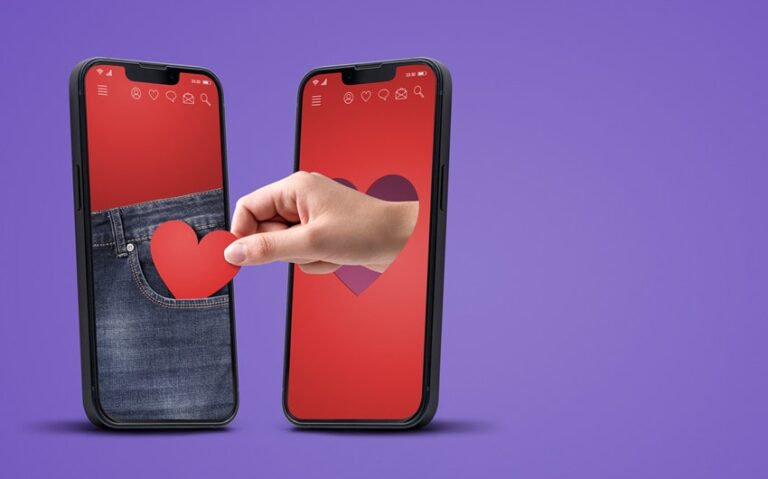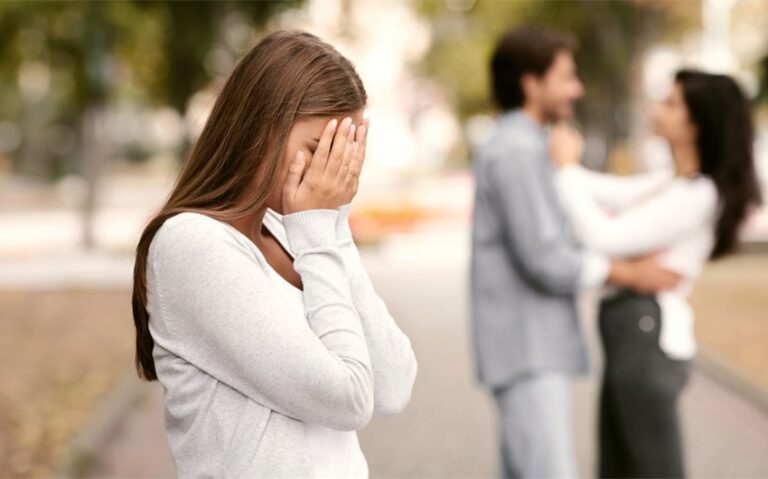How Long Does the Honeymoon Phase Last? 6 Key Factors
In every relationship, the honeymoon phase is that magical period filled with excitement, passion, and endless affection. It’s when everything feels effortless, and your partner seems perfect. But how long does the honeymoon phase last?
Many couples wonder when this blissful stage starts to shift and what comes next. While it’s different for everyone, understanding the typical timeframe and what influences it can help you appreciate this exciting chapter of your relationship even more. Let’s explore the factors that affect how long this phase truly lasts.
What is the Honeymoon Phase?
The honeymoon phase is often referred to as the initial stage of a romantic relationship where everything feels new, exciting, and effortless. During this time, couples experience heightened emotions, deep affection, and an almost constant sense of joy. The phrase originates from the idea of newlyweds being in a blissful, carefree state immediately after marriage, but it applies to any couple in the early stages of their relationship.
In the honeymoon phase, you tend to see your partner through rose-colored glasses. Flaws are overlooked, differences seem minor, and conflicts are rare. It’s a period where both partners feel emotionally and physically connected, with an intense focus on each other. This stage is characterized by frequent displays of affection, spontaneous romantic gestures, and a desire to spend as much time together as possible.
Chemically, the honeymoon phase is driven by a rush of hormones like dopamine, oxytocin, and serotonin, which are associated with pleasure and bonding. These hormones create a natural “high,” making everything about your partner seem perfect. This biological boost is one reason why this phase feels so euphoric.
While the honeymoon phase is wonderful, it’s important to recognize that it’s a temporary stage. It lays the foundation for a deeper, more mature love that develops as the relationship progresses. However, the honeymoon phase sets the tone for how the couple communicates, resolves issues, and builds trust—key elements that will sustain the relationship beyond this early excitement.
How Long Does the Honeymoon Phase Typically Last?
The honeymoon phase is a delightful, yet temporary, part of any relationship. While it can be one of the most exciting times, filled with emotional highs and constant affection, many couples wonder how long this period will actually last. The truth is, there’s no exact timeframe that applies to everyone.
The Typical Duration: Six Months to Two Years
For most couples, the honeymoon phase lasts between six months and a year. This period is marked by feelings of euphoria, constant focus on your partner, and a sense of perfection in the relationship. Everything feels easy, and the two of you are still discovering each other’s quirks, preferences, and habits, which keeps the relationship fresh and exciting.
However, it’s important to remember that the duration of this phase can vary greatly depending on the relationship’s dynamics. Some couples may experience this blissful phase for just a few months, while others can extend it closer to the two-year mark.
Factors That Influence the Length of the Honeymoon Phase

The duration of the honeymoon phase is not the same for every couple. Understanding these factors can give insight into why some couples seem to linger in this phase longer than others, while some transition into a more settled stage of their relationship sooner. Let’s explore some of the key influences on how long the honeymoon phase lasts.
1. Relationship Type: Long-Distance vs. Close Proximity
The physical distance between partners can play a significant role in how long the honeymoon phase lasts.
- Long-Distance Relationships: For couples in long-distance relationships, the honeymoon phase can last longer because their time together is more limited. Each visit or interaction feels special, and the excitement of being reunited can prolong the intense emotional connection. The absence of daily interactions can delay the routine or minor conflicts that typically arise in close-proximity relationships. In long-distance relationships, each meeting may feel like a mini-honeymoon, and the thrill of the relationship can be sustained over a longer period.
- Close Proximity Relationships: On the other hand, couples who live together or see each other daily might experience a shorter honeymoon phase. As they spend more time together, they are more likely to encounter the challenges of day-to-day life. The more frequent interaction allows them to see each other’s habits, quirks, and perhaps even flaws, which can lead to a faster transition from idealization to a more realistic understanding of one another. The daily exposure to each other’s true selves can naturally move the relationship out of the honeymoon phase sooner.
2. Personality Differences and Emotional Temperaments
The personalities and emotional temperaments of the individuals in the relationship can also significantly influence the length of the honeymoon phase.
- Romantic vs. Practical Personalities: Some people are naturally more romantic and inclined to keep the excitement and passion alive for longer. These individuals might engage in constant romantic gestures, plan surprises, and prioritize maintaining the spark in the relationship, prolonging the honeymoon phase. In contrast, those with more practical or grounded personalities may transition out of the honeymoon phase faster, focusing on the day-to-day realities of the relationship.
- Emotional Attachment Styles: Attachment styles also play a role in determining the longevity of the honeymoon phase. Individuals with a secure attachment style may have a balanced approach to relationships, enjoying the honeymoon phase while easily transitioning to a more stable, long-term bond. In contrast, those with anxious attachment styles might idealize their partner intensely during the honeymoon phase, creating an illusion of perfection that may prolong the phase or, conversely, end it abruptly when anxieties arise. Meanwhile, individuals with avoidant attachment styles may resist the emotional closeness of the honeymoon phase, causing it to end prematurely.
3. Life Circumstances and External Stressors
External factors such as stress, work, family obligations, or life events can have a profound effect on how long the honeymoon phase lasts. These circumstances can either shorten or prolong this period depending on the level of stress or ease the couple is experiencing.
- Low-Stress Environments: During periods when life is relatively stress-free—such as vacations, the early stages of a new job, or college years—the honeymoon phase may last longer. When couples are not weighed down by external pressures, they can focus more on enjoying each other’s company and deepening their romantic connection. This environment allows the couple to bask in the positive aspects of their relationship without the interference of real-world challenges.
- High-Stress Environments: Conversely, couples dealing with significant stress, whether from work, finances, or family, may find the honeymoon phase ending sooner. Stress can introduce conflicts into the relationship as couples must navigate challenges together, often exposing differences in how they handle pressure. While this doesn’t necessarily signal trouble, it can lead to a faster transition from the dreamy, euphoric stage into a more practical, day-to-day relationship.
4. Length of Courtship Before the Relationship
The amount of time a couple spends in courtship before officially entering a relationship can also impact the honeymoon phase.
- Short Courtships: For couples who had a brief dating or courtship period before committing to a relationship, the honeymoon phase may last longer. The relationship is still fresh and new, and both partners are learning about each other, experiencing many firsts together, and riding the wave of novelty and excitement.
- Long Courtships: On the other hand, couples who were together or knew each other for a long time before officially starting their relationship may experience a shorter honeymoon phase. They may have already established a sense of familiarity and routine during their courtship, meaning they enter the relationship with a deeper understanding of each other. As a result, the intense infatuation that characterizes the honeymoon phase may taper off more quickly.
5. Cultural and Social Influences
Cultural norms and societal expectations around relationships can also play a role in the length of the honeymoon phase. In some cultures, relationships are expected to maintain high levels of romance and passion, encouraging couples to actively work on keeping the spark alive for longer periods.
- Cultural Expectations of Romance: In cultures where grand romantic gestures, frequent affection, and intense emotional connection are highly valued, couples may feel more pressure to maintain the honeymoon phase. This societal expectation can lead couples to prolong the sense of excitement and passion as they strive to meet cultural ideals of romance.
- Social Norms of Relationship Progression: In contrast, cultures or communities that prioritize practical aspects of relationships, such as financial stability, family obligations, or career focus, may see couples transition more quickly out of the honeymoon phase. The relationship might shift towards building a stable, long-term partnership rather than emphasizing continued excitement and novelty.
6. Relationship Dynamics and Communication
The way couples communicate and the overall dynamics of their relationship can significantly influence the length of the honeymoon phase.
- Healthy Communication: Couples who communicate openly and regularly are more likely to maintain the honeymoon phase for longer. Effective communication can help resolve conflicts before they escalate, keeping the relationship harmonious and focused on the positive aspects. These couples can often continue to feel excitement and satisfaction in the relationship because they’ve built a strong foundation of trust and mutual understanding.
- Conflict Avoidance: On the flip side, couples who avoid addressing issues or who struggle with communication might see the honeymoon phase end sooner. The buildup of unresolved tensions or unmet expectations can lead to frustration, which may pull the relationship out of the honeymoon phase faster. In such cases, the early feelings of euphoria can give way to the realities of dealing with conflict and differences.
Signs the Honeymoon Phase is Ending

As the honeymoon phase fades, couples may notice changes in their relationship dynamics. This transition is normal and signals the start of a deeper connection. Here are common signs the honeymoon phase is ending:
1. Less Idealization of Your Partner
During the honeymoon phase, you may overlook your partner’s flaws. As it ends, you begin to see them more clearly, noticing habits or quirks that you once ignored.
Why This Happens: The initial surge of hormones like dopamine fades, leading to a more realistic view of your partner.
2. Increased Comfort and Routine
Couples shift from spontaneous romantic gestures to comfortable routines. Staying in for a movie night or relaxing at home becomes more appealing than elaborate dates.
Why This Happens: As emotional security grows, the need to impress each other diminishes, replaced by a more relaxed connection.
3. More Frequent Conflicts
Conflicts that were avoided early on may start to surface as you and your partner begin to express preferences more openly.
Why This Happens: Early in relationships, couples often focus on harmony. As things progress, differences become more apparent, leading to occasional disagreements.
4. Seeing Differences More Clearly
You begin to recognize the differences between you and your partner—whether in personality, habits, or values—that were less noticeable during the honeymoon phase.
Why This Happens: The brain’s initial focus on similarities shifts to acknowledging both strengths and differences.
5. Physical Affection May Decrease
While affection remains, it may not be as constant or intense as during the honeymoon phase.
Why This Happens: The relationship deepens emotionally, and physical affection is balanced by other forms of connection, like emotional support.
6. Emotional Intimacy Grows
The relationship shifts from physical passion to deeper emotional bonding. Conversations become more meaningful, focusing on vulnerabilities, goals, and personal growth.
Why This Happens: As trust builds, emotional closeness becomes the foundation of the relationship.
7. Less Spontaneity, More Planning
Spontaneous adventures may give way to more planned activities as you balance your relationship with other responsibilities.
Why This Happens: Long-term relationships require planning to integrate life’s demands while maintaining time together.







